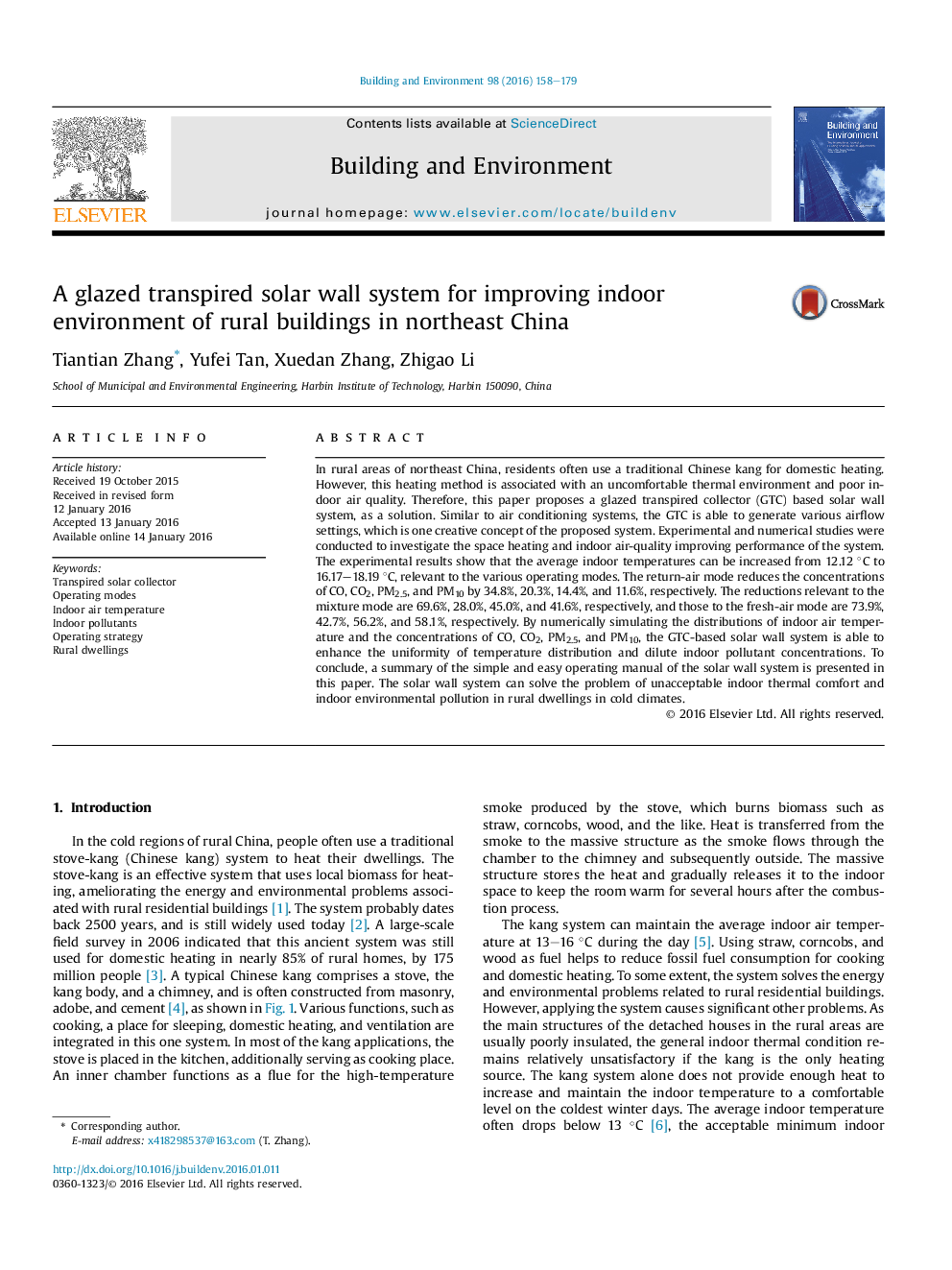| Article ID | Journal | Published Year | Pages | File Type |
|---|---|---|---|---|
| 6699560 | Building and Environment | 2016 | 22 Pages |
Abstract
In rural areas of northeast China, residents often use a traditional Chinese kang for domestic heating. However, this heating method is associated with an uncomfortable thermal environment and poor indoor air quality. Therefore, this paper proposes a glazed transpired collector (GTC) based solar wall system, as a solution. Similar to air conditioning systems, the GTC is able to generate various airflow settings, which is one creative concept of the proposed system. Experimental and numerical studies were conducted to investigate the space heating and indoor air-quality improving performance of the system. The experimental results show that the average indoor temperatures can be increased from 12.12 °C to 16.17-18.19 °C, relevant to the various operating modes. The return-air mode reduces the concentrations of CO, CO2, PM2.5, and PM10 by 34.8%, 20.3%, 14.4%, and 11.6%, respectively. The reductions relevant to the mixture mode are 69.6%, 28.0%, 45.0%, and 41.6%, respectively, and those to the fresh-air mode are 73.9%, 42.7%, 56.2%, and 58.1%, respectively. By numerically simulating the distributions of indoor air temperature and the concentrations of CO, CO2, PM2.5, and PM10, the GTC-based solar wall system is able to enhance the uniformity of temperature distribution and dilute indoor pollutant concentrations. To conclude, a summary of the simple and easy operating manual of the solar wall system is presented in this paper. The solar wall system can solve the problem of unacceptable indoor thermal comfort and indoor environmental pollution in rural dwellings in cold climates.
Keywords
Related Topics
Physical Sciences and Engineering
Energy
Renewable Energy, Sustainability and the Environment
Authors
Tiantian Zhang, Yufei Tan, Xuedan Zhang, Zhigao Li,
